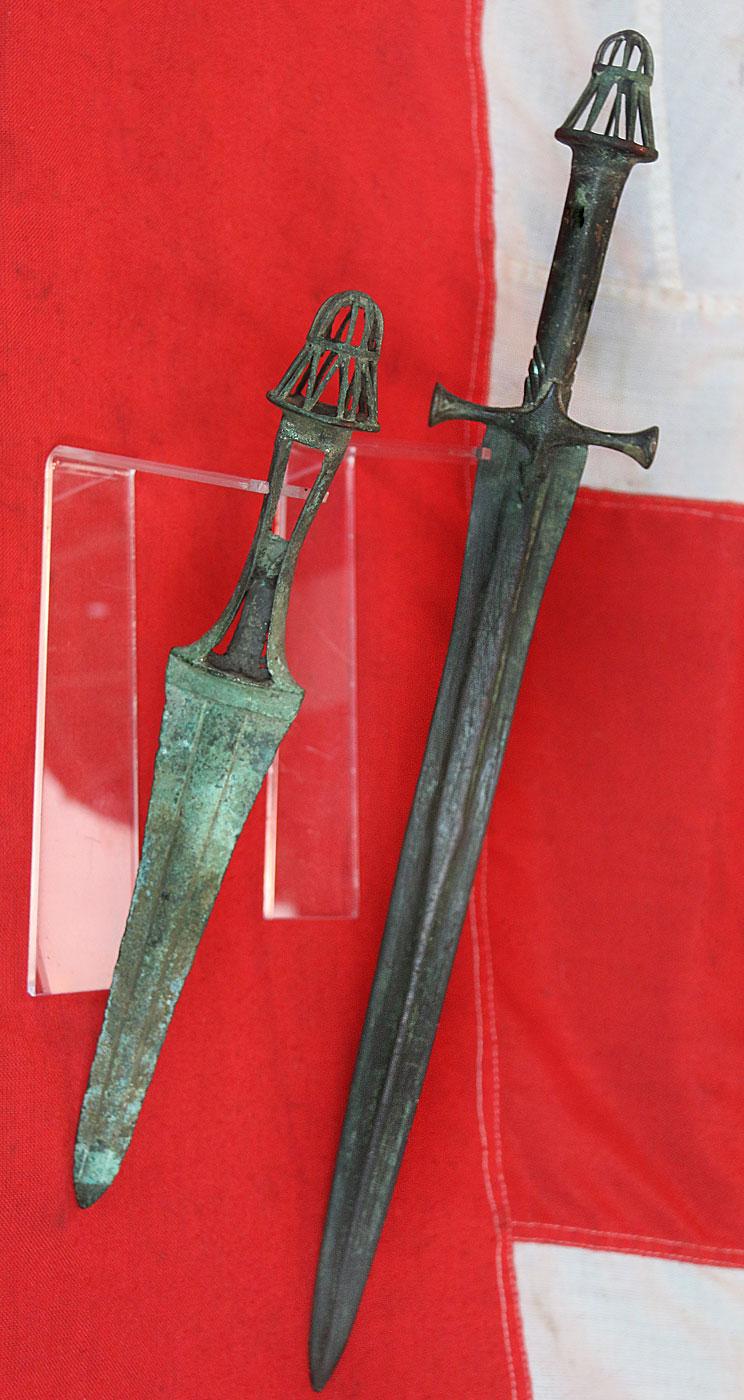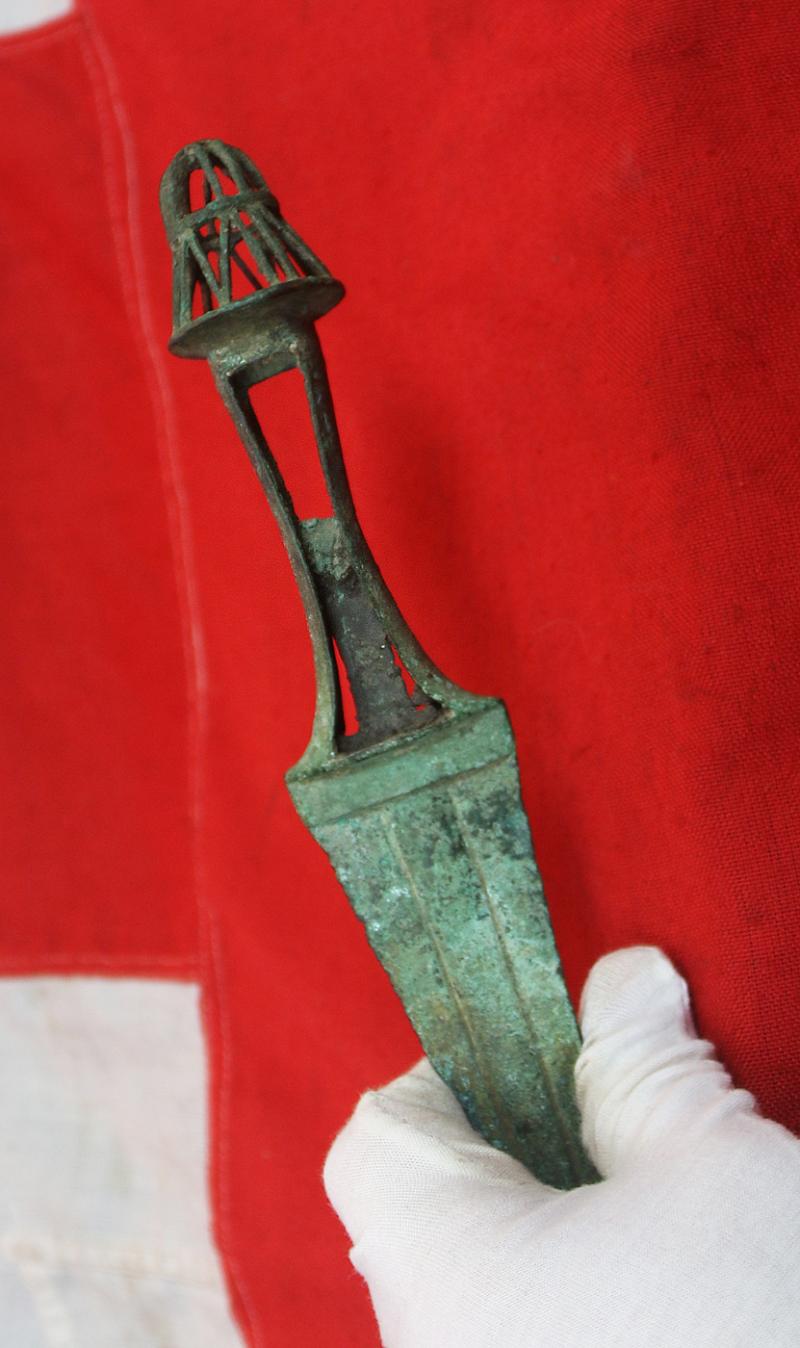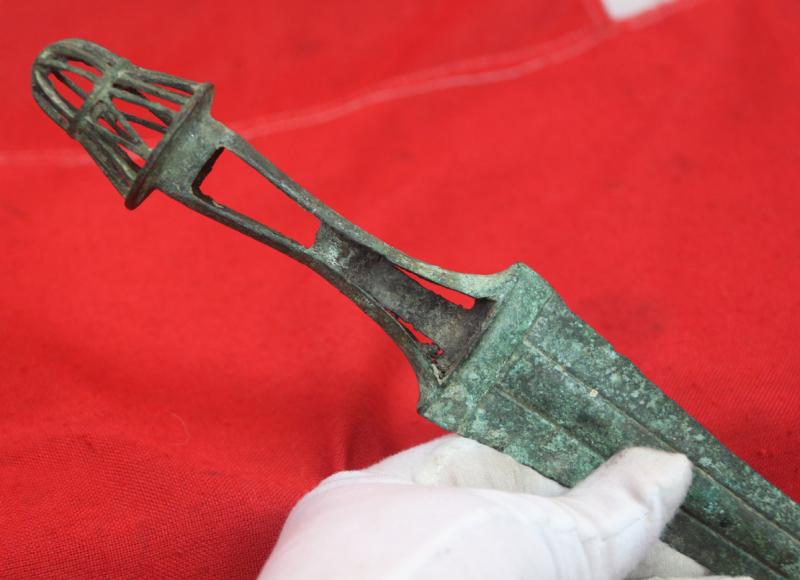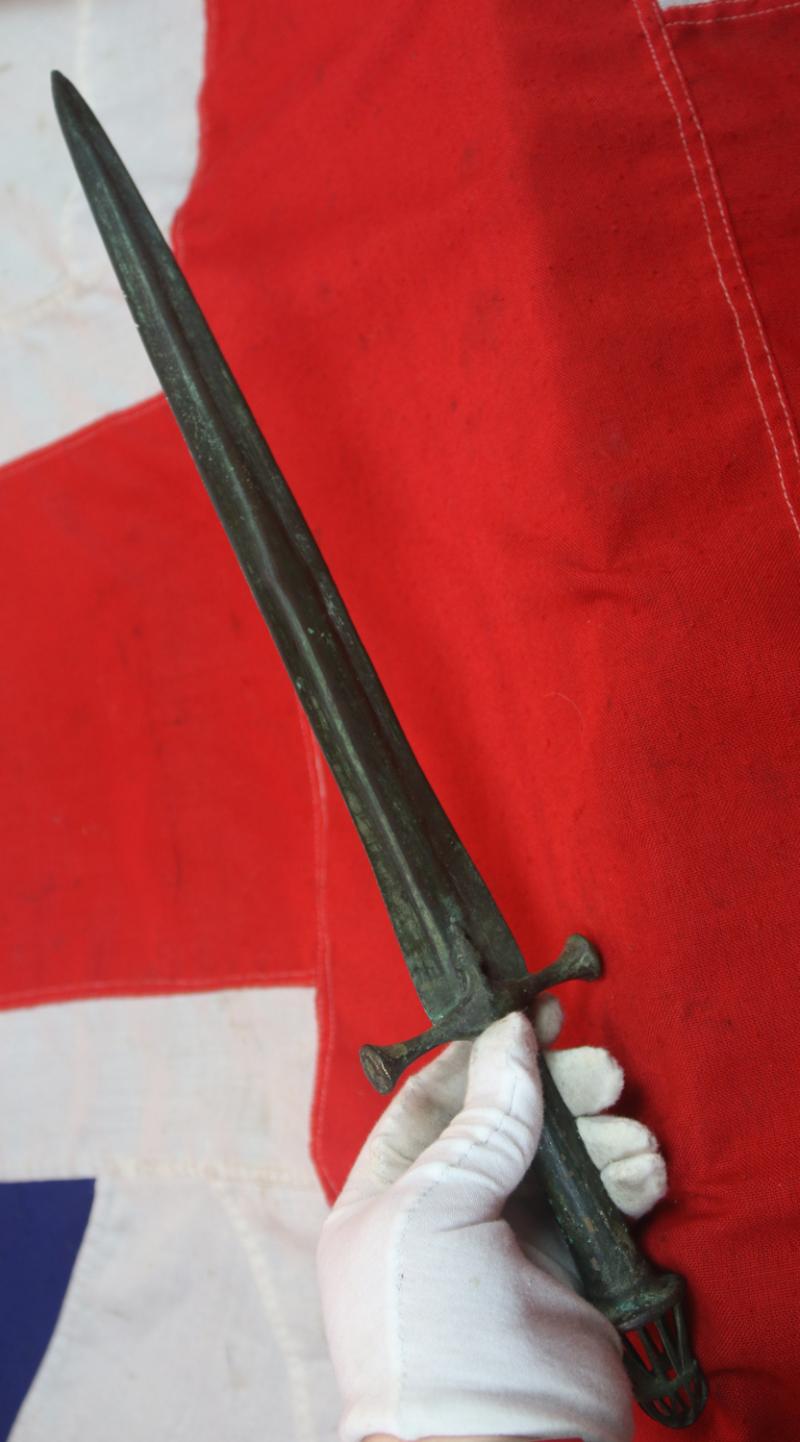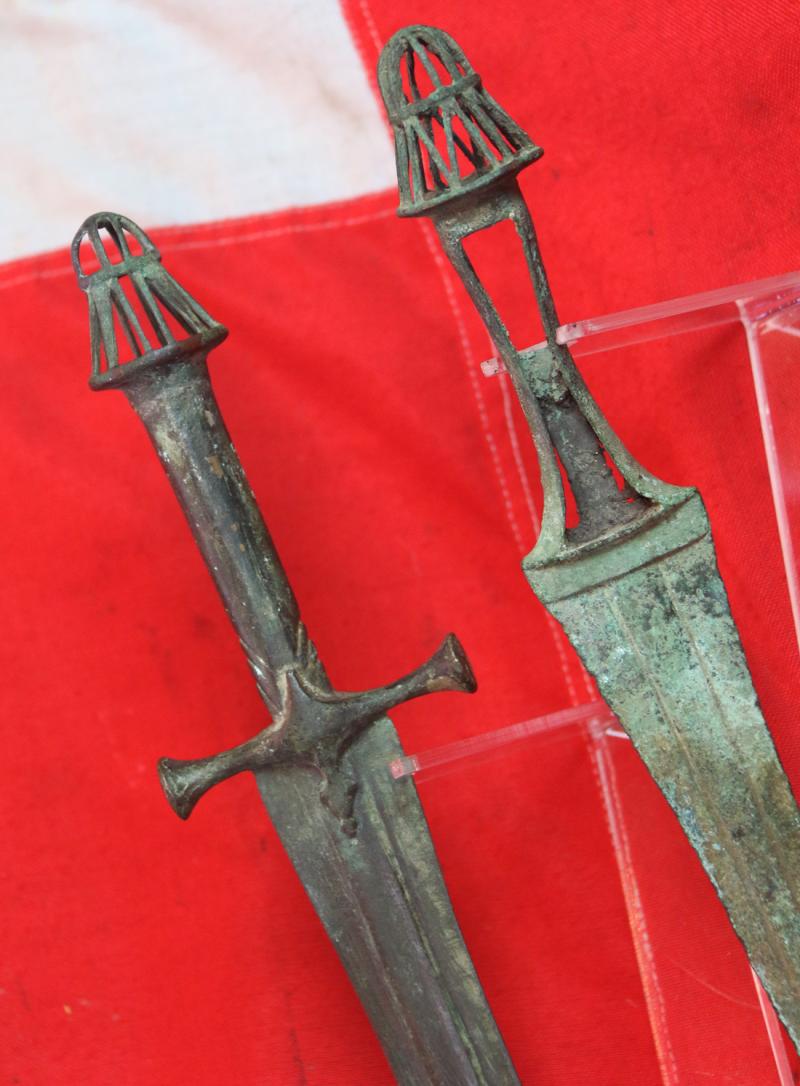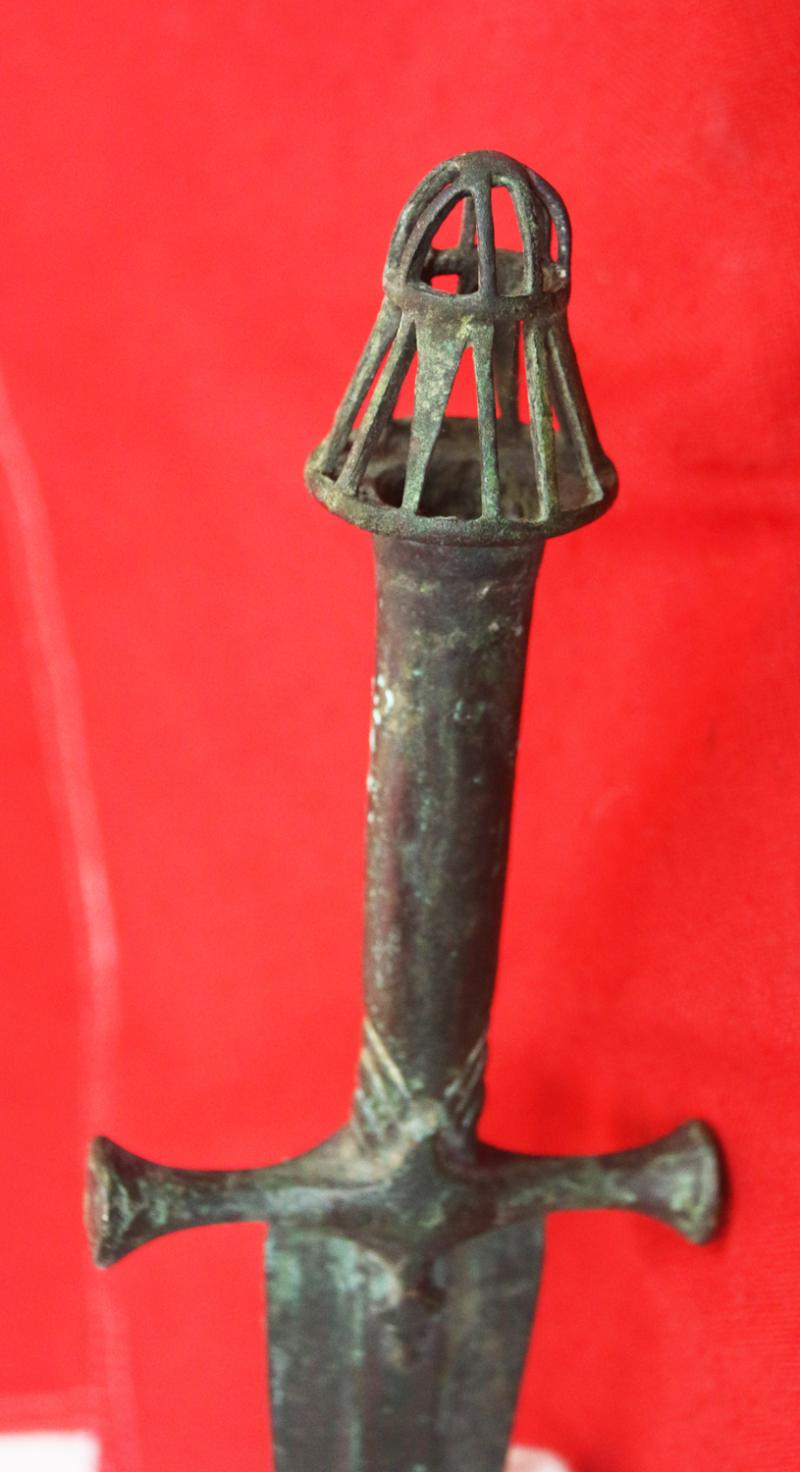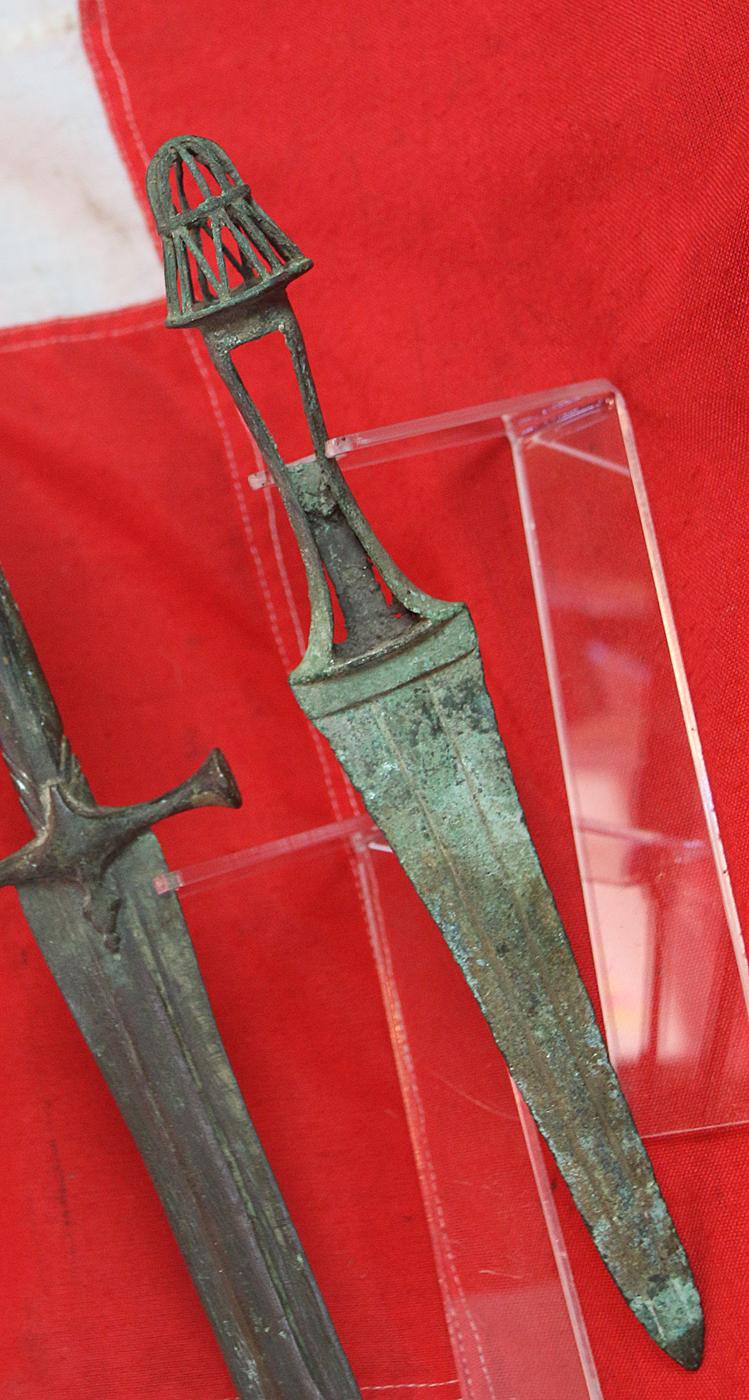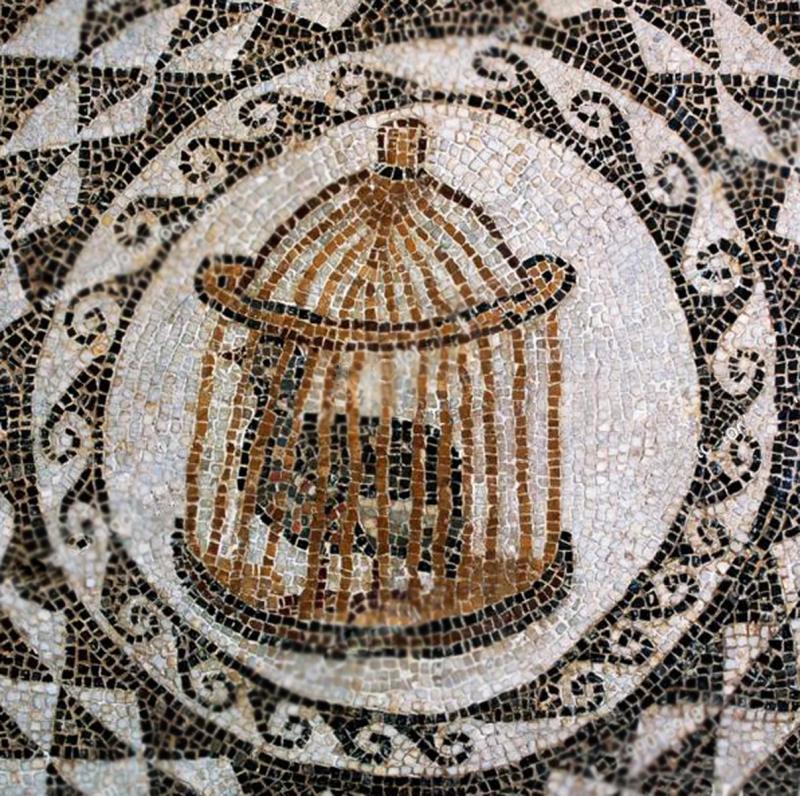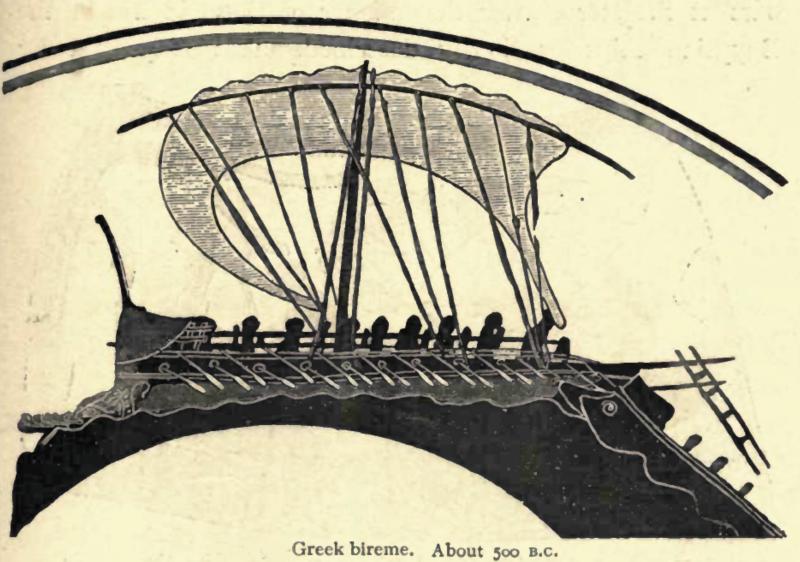A Beautiful Matched Pair of An Ancient Bronze Sword and Dagger With Pierced Bird Cage Pommels. From The Era of the Ancient Greco-Persian Wars
It is incredibly rare to find two weapons that may likely have been made by the same sword-maker up to 3000 years ago, likely for the same warrior, and them to still be together today. Almost certainly excavated, two hundred years ago or more during the era of the Grand Tour, possibly from the same warrior's tomb or burial or an ancient battle site or sunken bireme. A bireme is an ancient oared warship (galley) with two superimposed rows of oars on each side. Biremes were long vessels built for military purposes and could achieve relatively high speed. They were invented well before the 6th century BC and were used by the Phoenicians, Assyrians, and Greeks. The bireme was also recorded in ancient history on the 8th and early 7th-century BC Assyrian reliefs, where they were used to carry out an amphibious attack on the coast of Elam and the lagoons of the Persian Gulf during the reign of Sennacherib. Over the centuries in the Persian Gulf the Aegean Sea and the Northern Mediterranean, ancient artifacts, pottery and the like have been drawn up by numerous fishermen’s nets, such as, for example our Minoan spears recovered by 18th century Cretan fishermen from the sea bed. See the picture in the gallery of a 500bc Greek bireme.
A picture in the gallery from a mosaic tile floor excavation in Medeina of an ancient Roman Villa, showing a bird in a cage, the inspiration of the shape and form for the pommels on these swords, that were likely made up to 1000 years before the villa was built by the Romans in the 2nd century.
Double edged graduating blades with central midrib. Hollow grips, the dagger with open panels for side plate inserts, the short sword with cylindrical grip. The short sword has a pair of rounded quillon crossguard with widened flattened ends.
The style of warfare between the Greek city-states, which dates back until at least 650 BC (as dated by the 'Chigi vase'), was based around the hoplite phalanx supported by missile troops. The 'hoplites' were foot soldiers usually drawn from the members of the middle-classes (in Athens called the zeugites), who could afford the equipment necessary to fight in this manner. The heavy armour (the hoplon) usually included a breastplate or a linothorax, greaves, a helmet, and a large round, concave shield (the aspis) .Hoplites were armed with long spears (the dory), which were significantly longer than Persian spears, and a sword (the xiphos). The heavy armour and longer spears made them superior in hand-to-hand combat and gave them significant protection against ranged attacks. Lightly armed skirmishers, the psiloi also comprised a part of Greek armies growing in importance during the conflict; at the Battle of Plataea, for instance, they may have formed over half the Greek army. Use of cavalry in Greek armies is not reported in the battles of the Greco-Persian Wars.
The battle of Marathon
The Persian fleet headed south down the coast of Attica, landing at the bay of Marathon, roughly 40 kilometres (25 mi) from Athens. Under the guidance of Miltiades, the general with the greatest experience of fighting the Persians, the Athenian army marched to block the two exits from the plain of Marathon. Stalemate ensued for five days, before the Persians decided to continue onward to Athens, and began to load their troops back onto the ships. After the Persians had loaded their cavalry (their strongest soldiers) on the ships, the 10,000 Athenian soldiers descended from the hills around the plain. The Greeks crushed the weaker Persian foot soldiers by routing the wings before turning towards the centre of the Persian line. The remnants of the Persian army fled to their ships and left the battle.89 Herodotus records that 6,400 Persian bodies were counted on the battlefield; the Athenians lost only 192 men.
As soon as the Persian survivors had put to sea, the Athenians marched as quickly as possible to Athens. They arrived in time to prevent Artaphernes from securing a landing in Athens. Seeing his opportunity lost, Artaphernes ended the year's campaign and returned to Asia.
The Battle of Marathon was a watershed in the Greco-Persian wars, showing the Greeks that the Persians could be beaten. It also highlighted the superiority of the more heavily armoured Greek hoplites, and showed their potential when used wisely
Code: 24850
3450.00 GBP

